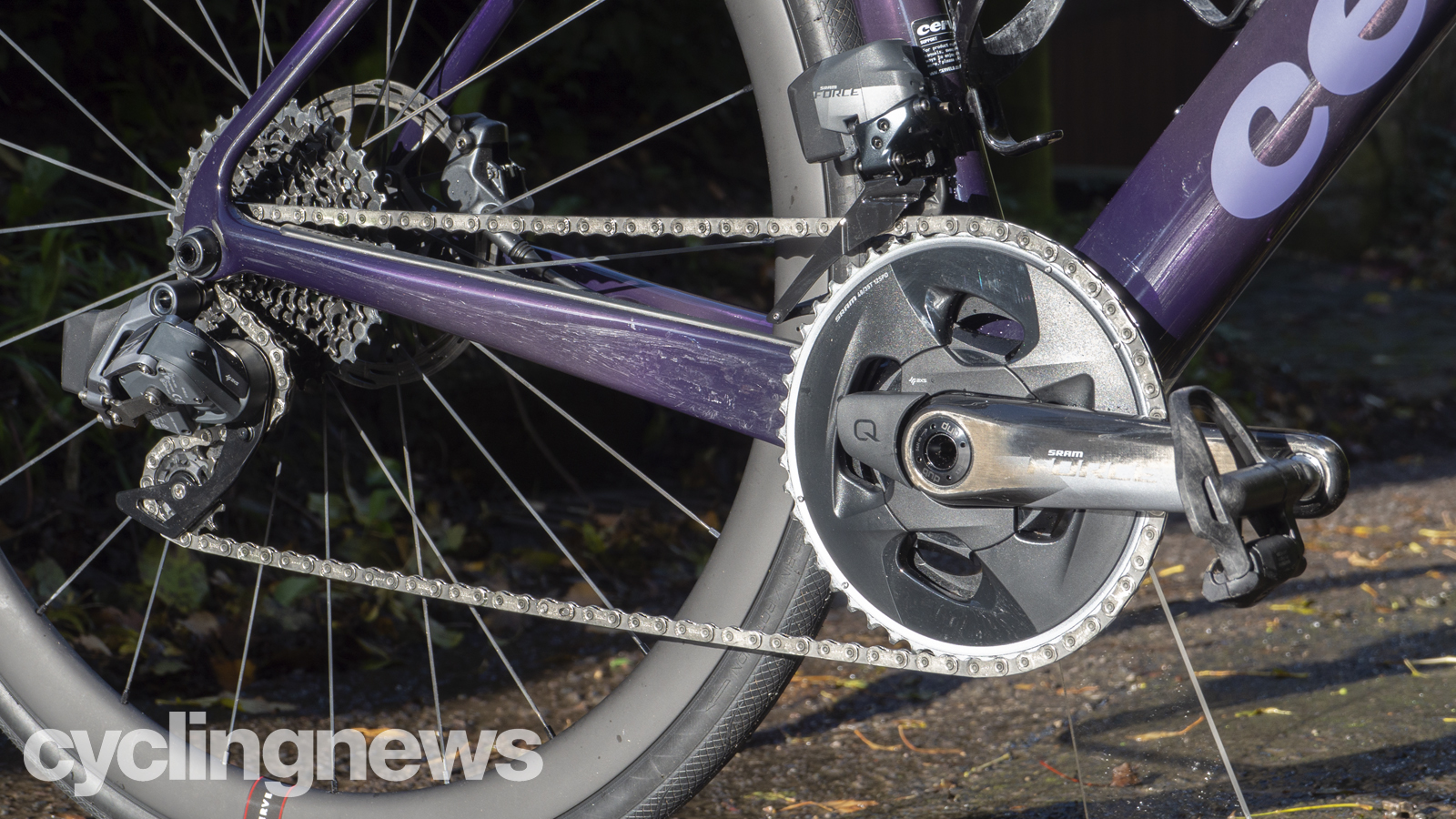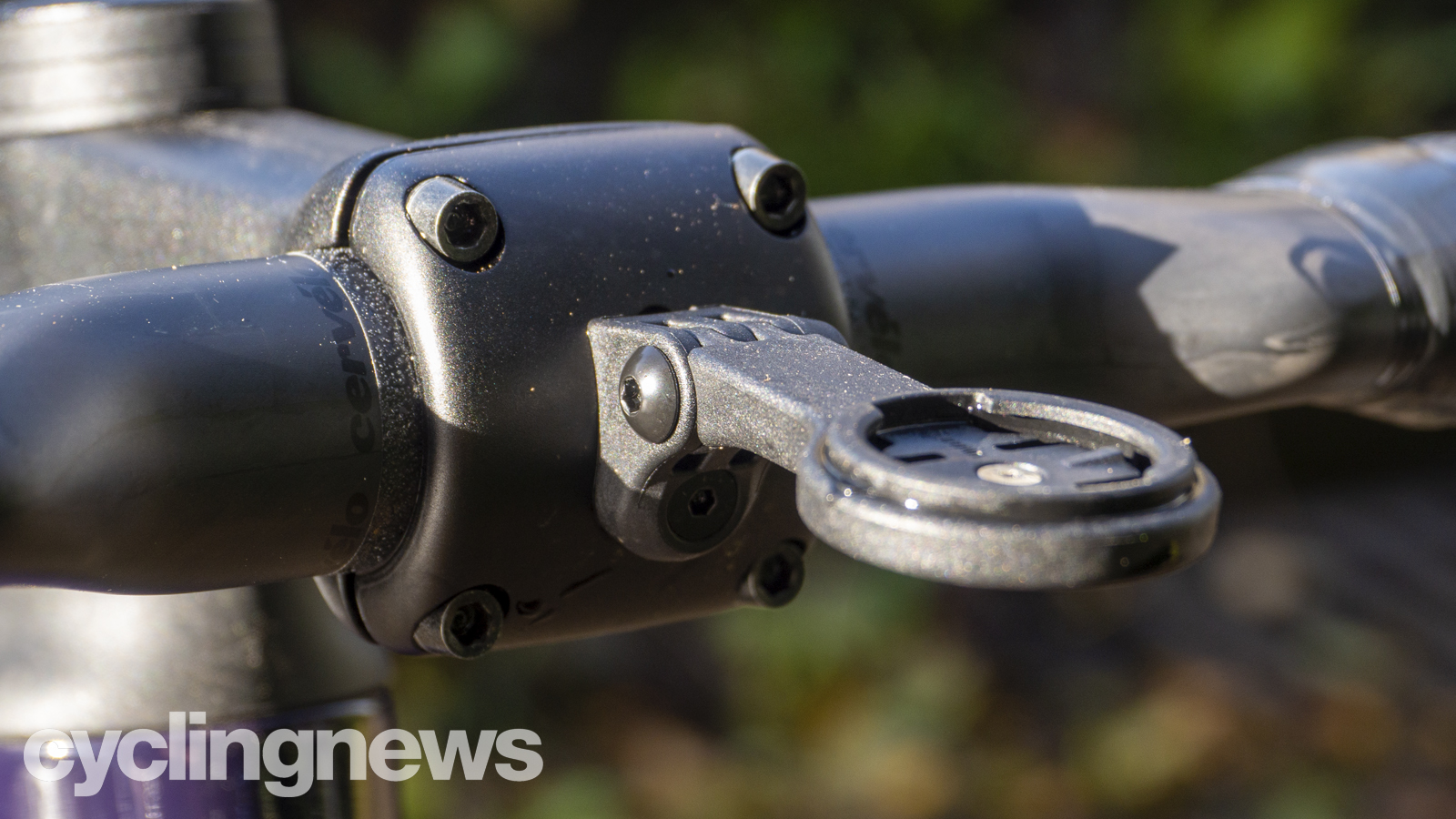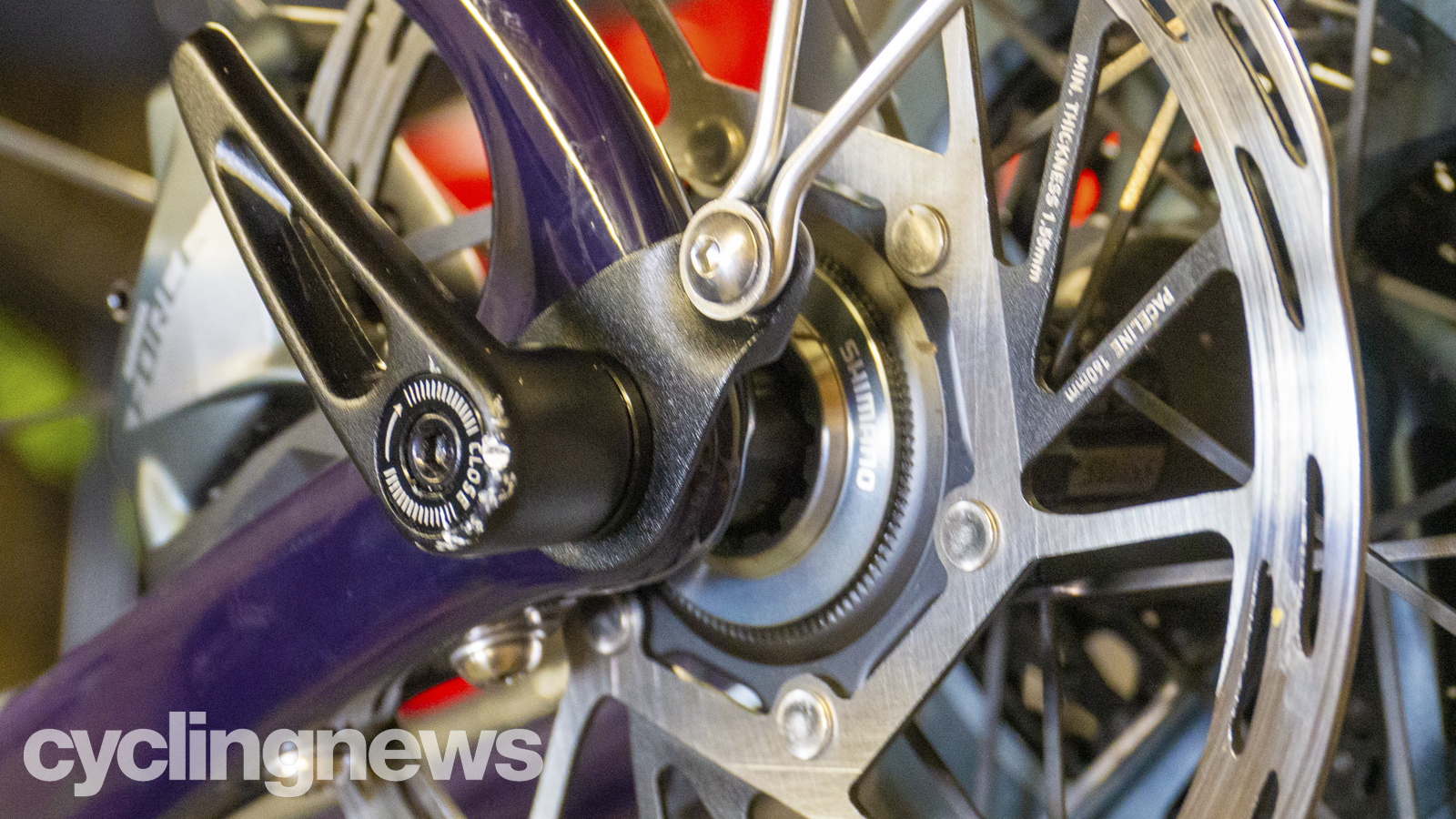Cyclingnews Verdict
Early hiccups soon faded into non-existence as the Cervelo Caledonia-5 becomes my go-to bike of choice in all weather
Pros
- +
Stable handling
- +
Integrated power meter
- +
Holds flat-land speed appreciably well
- +
Comfortable ride over all terrain
Cons
- -
Slightly overweight
- -
Not 100 per cent home-mechanic friendly
You can trust Cyclingnews
Over recent years, when buying a road bike a consumer was typically given a choice. Lightweight, aero or endurance - and more recently gravel? This was great, assuming you only ever did a very specific type of riding or had the budget for four bikes. For the rest of us, this led to compromise.
Luckily, as technologies improve, many of these compromises are fading. No longer do you need to replace lightweight with aero, no longer does stiff have to equal incredibly uncomfortable, and no longer does a race bike mean a slammed front end and a bad back. Cyclists of today can very much have their cake and eat it - even despite the absence of mid-ride café stops due to COVID.
Then, in July 2020, along came a bike that epitomised this antithesis of compromise in the form of the Cervélo Caledonia-5. It's the first sign that Cervélo is looking to do things a little differently to reshape the way we categorise and define road bikes. Those once-clear distinctions are fast becoming blurred lines, and I for one am excited to see where this trend could take us.
Inspired by the team-only R3 Mud – a bike designed purely to be raced at Paris-Roubaix – the Caledonia is designed as a blend of Cervélo's R5 road bikes and the Aspero gravel bike. But more than just those, it takes cues from all of Cervélo's other road bikes. In fact, I feel that it sits right in the middle of Cervélo's R-Series road bikes, S-Series aero bikes, Aspero gravel bikes and outgoing C-Series endurance bikes. Is it an aero bike with slightly more relaxed handling for all-day comfort? Is it an endurance bike without the massive head tube? Is it a light-gravel bike with aero cues? Who knows, and frankly, who cares? It's a bike that can handle a dose of everything.
Cervélo's goal was to produce a fast road bike that was still versatile and comfortable enough to cover large mileage, rough road surfaces and even a little gravel, and the designers have done a really good job. Not only in creating a bike that fills the gap catering to the all-road and endurance market but one that optimises aerodynamics too. Such is its versatility, it's the bike you can expect to see Jumbo Visma take to Paris-Roubaix, and it's the same bike I currently have mudguards fitted to for wet-weekend winter base miles.
However, does its Jack-of-all-trades nature mean it's a master-of-none?
I was offered a Caledonia-5 to test in July 2020, and I quickly requested to upgrade this short-term offer into a long-term process, in the hope to truly test the bike's do-it-all, do-it-well promises. So far, it's excelled at everything from all-day sunshine group riding to solo winter base miles. It's been the subject of every bad-weather mile I've covered since November, it's been bolted to a turbo trainer, and it's currently fitted with a pair of full-length fenders.
Design and aesthetics
The model I've been riding is the Caledonia-5 Force eTap AXS spec, listed at US$7,000 / £6,399 / €7,199 / AU$10,500.
It is resplendent in 'Purple Carbon', a paint job that flicks between navy and purple depending on how the light hits. This is complemented by lighter purple Cervélo logos on the down tube and fork.
Weights for the Caledonia-5 are claimed to be a 936g frame and 370g fork. The lower-spec Caledonia comes in at 1,031g for the frame and 432g for the fork. Both share the same tube shapes, and Cervélo rates both frames as having the same qualities in stiffness.
Design features include the now-common dropped seat stays, a D-shaped seatpost, an integrated cockpit, tubeless-ready carbon fibre wheels, as well as truncated aerofoil tubes.


Cervélo has manipulated the geometry for the Caledonia, increasing the wheelbase and slackening the head angle to increase stability over the R series bikes for rough surface riding. As this is to be used as Jumbo Visma's Paris-Roubaix bike, Cervélo didn't want to lose cornering sharpness and have therefore increased the rear-centre to 415mm, lowered the bottom bracket to account for the larger tyres and increased the trail to 58.5mm on all sizes.
| Size | 48CM | 51CM | 54CM | 56CM | 58CM | 61CM |
|---|---|---|---|---|---|---|
| Stack | 505mm | 530mm | 555mm | 580mm | 605mm | 630mm |
| Reach | 360mm | 369mm | 378mm | 387mm | 396mm | 405mm |
| Seat Tube Angle | 74.5 degrees | 74 degrees | 73.5 degrees | 73 degrees | 73 degrees | 73 degrees |
| Top Tube Length | 502mm | 522mm | 543mm | 565mm | 581mm | 598mm |
| Wheel Size | 700C | 700C | 700C | 700C | 700C | 700C |
| Head Tube Angle | 70.5 degrees | 71.5 degrees | 72 degrees | 72 degrees | 72 degrees | 72 degrees |
| Trail | 60mm | 60mm | 60mm | 60mm | 60mm | 60mm |
| Fork Offset | 59mm | 53mm | 50mm | 50mm | 50mm | 50mm |
| Head Tube Length | 89.5mm | 109.9mm | 136mm | 162.3mm | 191.2mm | 217.5mm |
| Bottom Bracket Drop | 76.5mm | 76.5mm | 74mm | 74mm | 71.5mm | 71.5mm |
| Front Centre | 579.4mm | 581.7mm | 591.5mm | 608.5mm | 626mm | 643mm |
| Wheelbase | 982.2mm | 984.5mm | 995.2mm | 1012.3mm | 1030.7mm | 1047.8mm |
| Standover Height | 712mm | 752mm | 784mm | 807mm | 834mm | 857mm |
| Chainstay Length | 415mm | 415mm | 415mm | 415mm | 415mm | 415mm |
Cervélo says this has slowed the handling down a little compared to the R-Series or S-Series, specifically for the demands of Roubaix, reasoning that a comfortable and confident rider will be able to race faster.
To create a bike that can be raced on poorly maintained surfaces and pavé, it has to be durable enough to deal with vibrations, torsional stresses and impacts, of course. However, in order to retain aerodynamic proficiency, Cervélo looked to its existing library of tube shapes from development of the R-Series and S-Series. This meant more time could be spent optimizing the carbon modulus to balance compliance and stiffness, knowing aerodynamic performance was already taken care of. It's worth noting that Cervélo supplies no specific aerodynamic claims for the Caledonia.


To further aid this compliance, the frame has been designed with clearance for 34mm tyres. This is far from groundbreaking in the endurance bike realm (the Trek Domane can handle 38mm), but it helps to add another dimension to the bike's versatility. The combination of aero tubes and sharp handling make it ready to race, but slot in some 34mm tyres and you have a bike capable of fast, all-day gravel adventure. Especially since the stack can be adjusted using different headset bearing caps and spacers to offer a range between an aggressive position mimicking a slammed R3, to a stack higher than the tallest C3.

Specifications
The Force eTap AXS groupset comes complete with its integrated Quarq power meter. The 48/35 chainset is paired with a 12-speed 10-36 cassette which has so far provided ample gearing selection. However, the front derailleur braze-on tab is removable, should you wish to set it up one-by. The hydraulic disc brakes are also from the Force level group, and in the countless hours of use, the whole system has been flawless.





Upfront, the handlebar is Cervélo's existing AB09, which has a nice ergonomic shape with a slight backsweep and a compact drop. I typically prefer a 40cm bar, but the 42cm fitted is stiff and compact enough to offer precise and confident handling.



This bike is the highest-spec model not to get the carbon ST31 stem, and instead, it employs the alloy ST32. Nonetheless, all Caledonia-5 models feature an integrated cockpit which hides cables from the wind.
Cables (albeit of course, SRAM Force has none) and hoses are routed beneath the bar tape then through the middle of the stem, using a D-shaped steerer and split spacers. As a result, the Caledonia-5 is restricted to electronic groupsets. For comparison, the lower-spec Caledonia foregoes the integrated cockpit and as a result, is mechanical groupset compatible.
The integration certainly makes for an extremely clean front end aesthetic, but it does mean you'll need to cut your brake lines if you wish to swap your stem - likewise if you wish to replace your headset bearings. However, the split spacers mean you can easily adjust your position, at least. It also limits aftermarket upgrade compatibility, and Cervélo states its own stems and handlebars must be used.

At the front of the stem, a centrally positioned out-front mount is used, with inserts for all of the industry's best cycling computers. This is certainly neat and tidy, but a very minor bugbear is that it holds your computer around a centimetre higher than something like a K-Edge mount does.
Nonetheless, the mount forms one of a range of clever mounts, which also consists of a saddle rail mount, an upfront GoPro-style mount for your camera (or more likely, your lights), and removable integrated mounts for full-length mudguards.
The mudguard mounts are reasonably straight forward to fit and adjust, however, threading the tabs onto the thru-axle does mean they hang free whenever a wheel is removed. This hasn't been an issue for me because I've not suffered a single puncture and my Kinesis Fend Off guards are aluminium in construction, but more fragile plastic fenders could become damaged if wheels are regularly removed without care. In addition, the hidden mounting point's position behind the fork meant my fenders didn't fit without a bit of a bodge.





The wheels are, in a way, Cervélo own-brand options, but they are carbon fibre, 35mm deep and tubeless-ready with an on-trend internal width of 21mm. They are the new '35' wheels from the recently launched Reserve range of road wheels, complete with a DT370 hub. Reserve is a component subsidiary of Santa Cruz Bicycles - which conveniently, is owned by Pon Group who also own Cervélo. Interestingly, Reserve wheels will be found on the Jumbo Visma Women's team bikes in 2021, the only thing to differ from the men's team's bikes.

These wheels are shod with 30c Vittoria Rubino Pro tyres, which while not the fastest or lightest options on the market, strike a good balance between rolling speed, small-bump-absorption and puncture protection. I've had them set up with tubes, and while I've not yet pushed the 'light gravel' boundary too far, they have performed dutifully and I've not punctured once.

The saddle is the Prologo Dimension TiRox saddle, which I'd not used before this bike, but it fast became one of the most comfortable I've ever used.
Performance
Despite the excitement and promise, the first few rides on this bike left a rather large sense of concern and disappointment. The seatpost kept slipping, the brakes were rubbing and the gears were badly indexed. These merely build-level problems led to a feeling that the bike's design was rushed.
They say you only get one chance to make a first impression, but one thing I've come to learn over the past 18 months of testing bikes is that the difference between a badly-built bike and a well-built bike is far greater than the difference between two different bikes built to the same standard. So I spent some time in the workshop in order to give the Caledonia-5 a second chance.
Correcting what turned out to be an incorrectly fitted brake caliper solved the brakes. A bit of carbon paste and a slight over-torquing of the seatpost solved the slipping and SRAM's easy-to-adjust eTap was a simple fix. At the beginning of the next ride, it was immediately obvious that the bike's design wasn't at fault at all.
In the months since, the bike has become my go-to training bike and is regularly picked ahead of various higher-priced options. It offers a lively, enjoyable, but stable ride over everything from flat highway roads to switchback descents and off-road cycleways. It holds speed well, and despite being in the mid-8kg range, it still climbs well thanks to its decent power transfer.
The integrated power meter means it's a genuinely useful training tool straight off the bat. Of course, power data might not be everyone's primary requirement, but it's important for me and at this price, it's certainly nice not to have to spend more on top.
Verdict
Before even setting eyes on the bike, I had already fallen for the blurred-lines approach that Cervélo has taken with the Caledonia and I truly hope more brands follow suit. I've long had a soft spot for bikes that can wear multiple hats, and the Caledonia-5 epitomises this approach.
The early impressions might not have been what my prior excitement expected, but in the months since, the Caledonia-5 has well and truly won me over.
It has truly excelled at the terrain and riding formats I've thrown at it thus far, and when lockdown lifts, I have grand plans for the Caledonia-5, including taking advantage of all my winter training with a few competitive endeavours, as well as some on- and off-road epic adventures.
I posed the question earlier: does a Jack of all trades become a master of none? And the honest, analytical answer to this question would have to be yes. It's not the fastest bike out there, nor is it the lightest or the most capable off road, but it's appreciably good at all of the above in equal measures, and that's where it charm lies. It's faster on road than an Aspero while still being able to handle the rough stuff and it's considerably more capable than the S- and R- series bikes without feeling like a tractor on the tarmac.
Unless you're only ever racing up mountains, smashing local crits, or sending it down the singletrack on each and every ride you do, the Caledonia-5 is the bike you should buy.
One thing that's certain is that if you're after a bike to do many things with a sense of confidence and capability, then the Caledonia-5 is one of the best road bikes around, and one that I find very easy to recommend.
Logbook: Cervélo Caledonia-5
- Time: 6 months
- Rides: 50+
- Mileage: 1000km+
- Punctures: 0
- Ride types: Long group rides, winter base training, indoor, smooth and broken ground
Tech spec: Cervélo Caledonia-5
- Price: US$7,000 / £6,399 / €7,199 / AU$10,500.
- Frame: Cervélo Caledonia-5
- Size: 56cm
- Weight: 8.5kg
- Groupset: SRAM Force eTap AXS
- Crankset: SRAM Force Quarq power meter crank; 48/35T
- Cassette: SRAM Force XG-1290; 10-36T
- Wheels: Reserve 35
- Brakes: SRAM Force eTap AXS HRD
- Handlebar: Cervélo AB09
- Stem: Cervélo ST32
- Seatpost: Cervélo SP18
- Saddle: Prologo Dimension
- Tyres: Vittoria Rubino Pro 30c

Josh is Associate Editor of Cyclingnews – leading our content on the best bikes, kit and the latest breaking tech stories from the pro peloton. He has been with us since the summer of 2019 and throughout that time he's covered everything from buyer's guides and deals to the latest tech news and reviews.
On the bike, Josh has been riding and racing for over 15 years. He started out racing cross country in his teens back when 26-inch wheels and triple chainsets were still mainstream, but he found favour in road racing in his early 20s, racing at a local and national level for Somerset-based Team Tor 2000. These days he rides indoors for convenience and fitness, and outdoors for fun on road, gravel, 'cross and cross-country bikes, the latter usually with his two dogs in tow.
